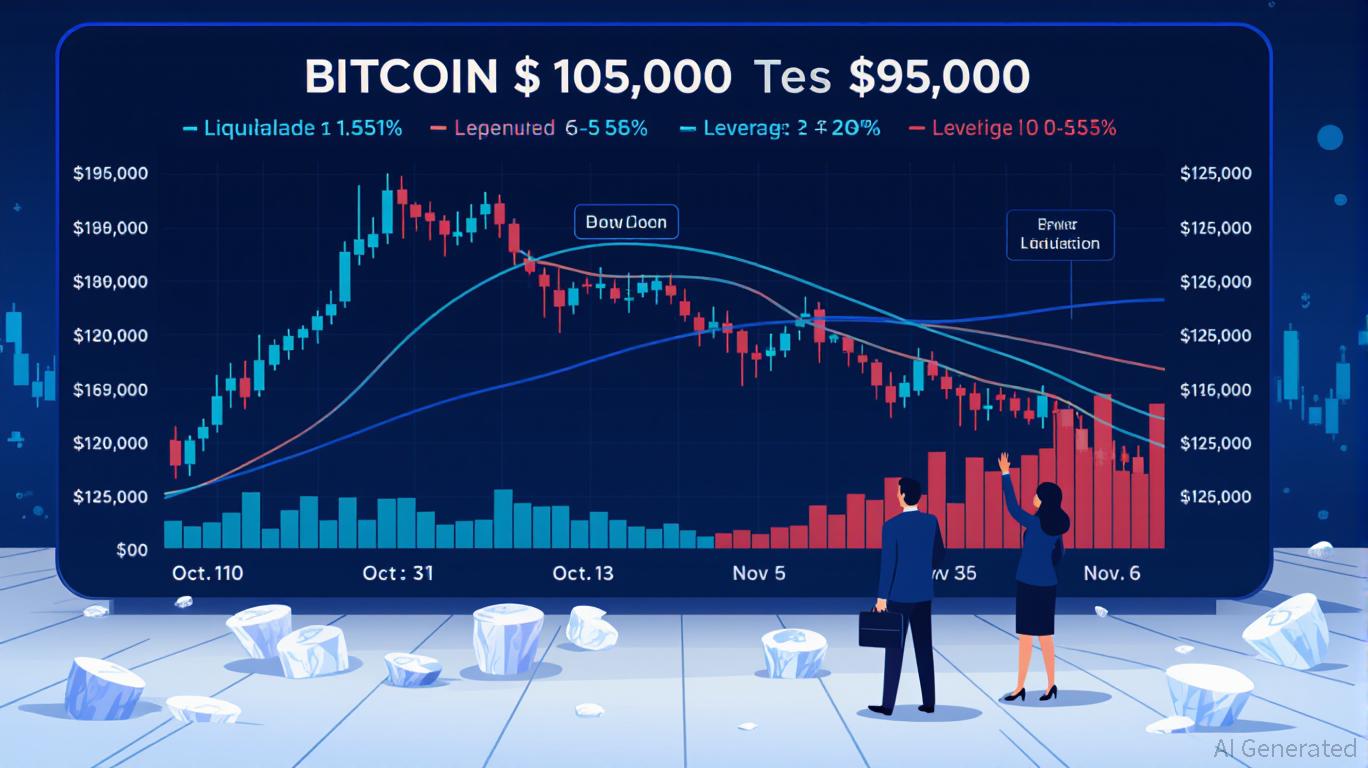Crypto’s Unchangeable Nature Versus Transaction Reversal: Shaping the Future of Stablecoins
- Circle explores reversible USDC transactions to combat fraud, departing from blockchain’s immutability. - Arc blockchain aims to bridge crypto and TradFi via institutional stablecoin tools, though critics call it overly centralized. - USDC’s $74B market cap growth aligns with U.S. policies promoting dollar-pegged stablecoins as global financial tools. - Debate intensifies over balancing consumer protection and decentralization, with reversibility seen as both innovation and ideological betrayal. - Regula

Circle Internet Financial, the company behind the world’s second-largest stablecoin
The idea of enabling reversible transactions is part of Circle’s broader plan to establish USDC as a mainstream financial instrument. Recently, the company introduced Arc, a blockchain platform tailored for institutional clients, aiming to streamline stablecoin payments for banks, asset managers, and large corporations. While Arc itself does not currently allow for transaction reversals, it may eventually feature a “counter-payment” mechanism to resolve disputes outside the blockchain, similar to how traditional finance handles refunds. Critics, however, argue that this approach could lead to excessive centralization, raising doubts about whether such a system still qualifies as blockchain Circle Explores Reversible Stablecoin Transactions to Curb Fraud [ 2 ].
Regulatory trends are also influencing the conversation. The U.S. Treasury anticipates that the stablecoin sector could surpass $2 trillion by 2028, fueled by increased institutional participation and favorable regulatory changes. The recently enacted GENIUS Act, supported by the Trump administration, is designed to reinforce the dollar’s global leadership by encouraging the use of dollar-backed stablecoins. Circle’s current initiatives are in line with this strategy, as USDC’s market value has climbed to $74 billion, and Goldman Sachs projects it could reach $77 billion by 2027 USDC Stablecoin Issuer Circle Examines ‘Reversible’ Blockchain [ 3 ]. Tarbert downplayed worries that stablecoins would drain deposits from banks, suggesting that the capital could instead come from new investments or reallocated funds Circle Exploring Refunds in Cases of Fraud or Disputes [ 4 ].
The ongoing debate between the concepts of immutability and reversibility highlights a broader transformation within the crypto industry. Supporters believe that reversible transactions could offer protection for scam victims and boost user confidence, while critics see it as a departure from blockchain’s core ideals. Recent incidents, such as the Sui blockchain’s reversal of a $162 million theft, demonstrate both the potential advantages and the centralization risks of such features. Tarbert recognized this complexity, describing the “inherent tension” between instant settlement and the inability to reverse transactions Circle Internet Financial’s Strategic Shift [ 5 ].
Stablecoins are increasingly drawing attention from both regulators and major financial players. USDC’s use in international payments and capital markets is on the rise, supported by collaborations with custodians like Fireblocks. The sector’s momentum is further strengthened by the introduction of new financial products, such as a Dogecoin ETF and institutional-grade stablecoin trusts, signaling greater acceptance in traditional finance. Nonetheless, the industry still faces hurdles in balancing innovation, regulatory requirements, and the preservation of blockchain’s decentralized nature Dogecoin’s ETF Launch and Institutional Adoption [ 6 ].
The discussion around reversible transactions highlights the changing role of stablecoins in the global financial landscape. Circle’s efforts to bridge the gap between crypto and traditional finance also bring to light the ideological rifts within the sector. As stablecoins become more widely used, how these issues are resolved will likely influence the future structure of digital asset markets and regulatory policies Stablecoin Market Projections and Regulatory Developments [ 7 ].
Disclaimer: The content of this article solely reflects the author's opinion and does not represent the platform in any capacity. This article is not intended to serve as a reference for making investment decisions.
You may also like
ICP Network Expansion: Advancing Infrastructure Integration and Enhancing Token Use in 2025
- ICP Network's 2025 upgrades (2 TiB storage, AI integration) position it as a scalable Web3 infrastructure leader. - Cross-chain breakthroughs like Bitcoin DeFi Hub and Dogecoin support expand $600B+ market access through native swaps. - Enterprise partnerships with Azure/Google Cloud and 1.2M active wallets validate infrastructure adoption amid 30% price surge. - Industrial IoT and medical TPU collaborations demonstrate real-world blockchain applications beyond DeFi. - Q3 2025 challenges include 22.4% DA

ICP Caffeine AI: A Fresh Driving Force for the Integration of Web3 and AI?
- Dfinity's Caffeine AI platform (launched 2025) enables decentralized AI app development via natural language/code/image prompts, boosting ICP's price 56% in one day. - ICP's infrastructure now supports 1.2M wallets and 237B TVL in Q3 2025, aided by Microsoft/Azure partnerships and industrial IoT solutions. - Despite 30% Q3 price surge and 261% trading volume spike, DApp engagement fell 22.4%, highlighting adoption challenges amid competition from Palantir and BigBear.ai. - Institutional interest grows vi

Bitcoin Leverage Liquidation Turmoil: Managing Market Fluctuations Through Careful Risk Strategies
- 2025 Bitcoin liquidation crisis exposed risks of 1,001x leverage as $20B+ in positions collapsed during November's $100,000 price drop. - Experts warn leveraged trading amplifies losses through panic selling cycles, with 300,000+ daily liquidations erasing $1.3B in November. - Institutional hedging strategies like JPMorgan's ETF accumulation and dynamic margin adjustments emerged as effective risk mitigation tools. - Analysts recommend avoiding extreme leverage, using stop-loss orders, and diversifying h

Bitcoin Price Fluctuations and Institutional Involvement in November 2025: Signs of Market Maturity or Continued Speculation?
- Bitcoin's November 2025 volatility (41% spike post-September) reflects maturing institutional strategies amid $20B October liquidations. - $7.8B in Q3 2025 ETF inflows and $200B institutional holdings signal Bitcoin's shift from speculative asset to treasury tool. - Hedging mechanisms (covered calls, AI trading) reduced daily volatility to 2.1%, yet macro risks persist as seen in October's crash. - Galaxy Digital's $120,000 price cut and lingering retail speculation highlight Bitcoin's dual identity as b
